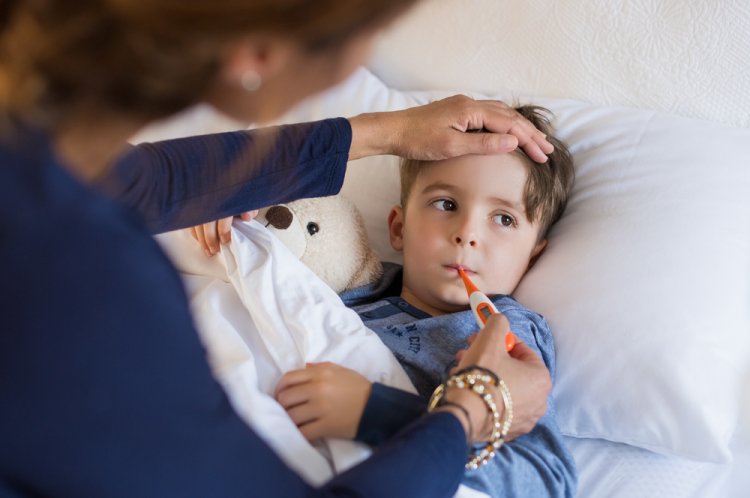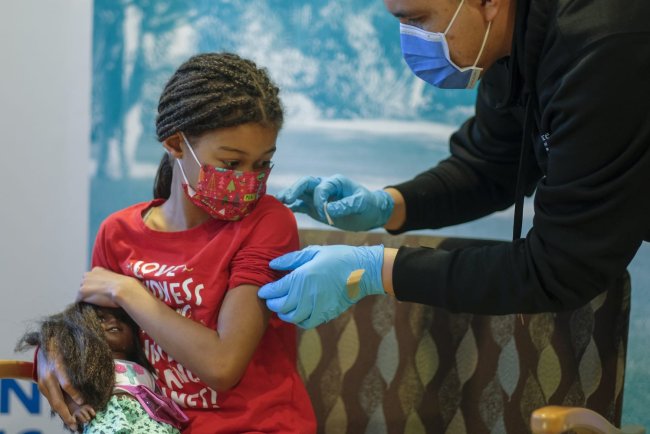What to Do If You Think Your Child Has the Flu
The first cough of flu season can make any parent’s stomach drop. Is it just a cold? RSV? COVID? Or the dreaded flu? Sorting through the overlapping symptoms isn’t easy, and when it’s your child who’s unwell, every little sneeze feels amplified. Here’s how to tell what might be going on and how to help your child feel better if the flu is the culprit.

Flu vs. Cold vs. RSV vs. COVID: How to Tell the Difference
At the start, these illnesses can look like identical twins. Still, there are a few subtle clues:
Flu: Comes on fast and furious. Fever, body aches, headache, cough, sore throat, exhaustion, sometimes vomiting or diarrhea, too.
RSV: Think mucus overload. Heavy congestion, phlegmy cough, fever, and sometimes wheezing in babies.
COVID: Similar to flu and RSV, but coughs tend to be less mucusy, fatigue can be overwhelming, and some kids lose their sense of taste or smell.
Common cold: Usually milder. Less likely to include a fever, though a bad cold can still knock a kid down for a few days.
Bottom line: if you’re not sure, you’re not failing as a parent; these illnesses are notoriously hard to tell apart.
When to Call the Doctor

If your child has flu-like symptoms, call your pediatrician’s office. You may not need an in-person visit, but it’s worth checking in. The doctor may:
Recommend testing for flu, COVID, or RSV.
Prescribe an antiviral medication if flu is suspected.
Ask you to bring your child in for an exam, depending on their health history.
Every child is different, so tailored medical advice is always your best compass.
How to Help Your Child Feel Better at Home
Once you’ve spoken to your doctor, you’ll want to set up your home “flu survival kit.” Stock up on:
Fever + pain relief: acetaminophen or ibuprofen (check with your pediatrician for dosages).
Thermometer: reliable and easy-to-read.
Fluids: juice, broth, electrolyte solutions, popsicles, refillable water bottles (bonus points if it has a straw for bed sips).
Comfort helpers: tissues, hand sanitizer, saline drops, humidifier, honey (for kids over 1), cough drops (for preschool age and up).
Simple foods: noodle soup, crackers, toast, rice, nothing fancy.
Rest Is Medicine, Too
Screens are tempting, but they don’t help a sick child truly rest. Create a calm space: low light, quiet activities like drawing or being read to, and plenty of naps. Let their body do the healing work.
Food Can Wait, Fluids Can’t

When your child has the flu, hydration matters more than nutrition. Water is fine, but juices and broths also provide much-needed sugars and electrolytes. If all they can manage is a popsicle, that counts. Don’t stress if they’re barely eating, their appetite will return as they recover.
Red Flags: When to Get Emergency Help
Most kids bounce back from the flu, but watch closely for signs that warrant a doctor’s immediate attention:
High fever (102°F or higher) that won’t come down or return after improving.
Difficulty breathing or wheezing.
Severe pain or unusual lethargy (hard to wake or keep awake).
Refusal or inability to drink fluids.
Vomiting that prevents hydration.
Anything that makes your parental gut say, something’s not right.
Trust that instinct it’s usually spot-on.
Keeping the Flu From Spreading
The flu is a family affair if you’re not careful. To protect everyone else in the house:
Keep your child home until fever-free for 24 hours without meds and well enough to participate in daily activities.
Wash hands constantly (this is where stashing hand sanitizer in every room comes in handy).
Teach kids to cough and sneeze into elbows, not hands.
Don’t share cups, utensils, blankets, or towels.
Wipe down high-touch surfaces and toys daily.
Swap real-life visits for FaceTime with friends and relatives.
Practice “gentle distance” snuggles are inevitable, but siblings can send air hugs instead.
And if your family hasn’t gotten flu shots yet? It’s not too late.
The Takeaway
If your child comes down with the flu, remember: you’re not powerless. Between your pediatrician’s guidance, some comfort essentials, and a watchful eye, you can help your child weather the storm and bounce back. The flu may knock them down, but with rest, hydration, and care, most kids are back to building pillow forts and begging for snacks in no time.
What's Your Reaction?




















